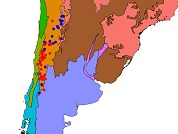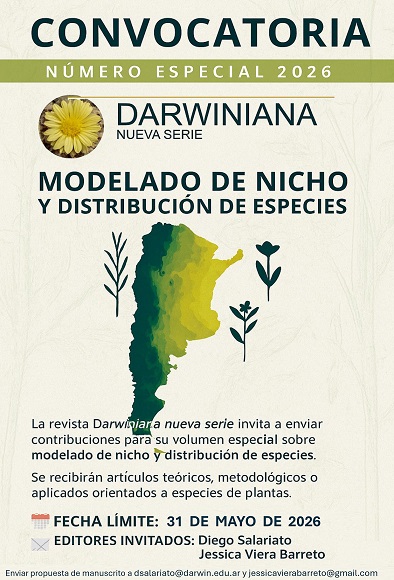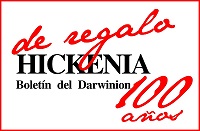Modelos de distribución y análisis morfométrico en Deyeuxia velutina, una especie andina de gramínea
DOI:
https://doi.org/10.14522/darwiniana.2020.82.894Palabras clave:
Caracteres diagnósticos, morfometría, patrones geográficos, taxonomía integrativaResumen
Rúgolo de Agrasar reconoció dos variedades de Deyeuxia velutina (D. velutina var. velutina y
D. velutina var. nardifolia) basándose en el indumento de las vainas, la longitud de la lemma, y la dirección de las hojas. Sin embargo, su delimitación taxonómica ha sido dificultosa debido a la superposición ocasional de estos caracteres. A fin de evaluar la delimitación infraespecífica de D. velutina, presentamos un estudio exhaustivo que combina análisis morfométrico y modelos de distribución potencial. Para explorar la variación morfológica y seleccionar caracteres diagnósticos, medimos 124 caracteres morfológicos en 52 especímenes de ambas variedades y realizamos un Análisis de Coordenadas Principales y análisis univariados (análisis de la varianza y la prueba no paramétrica de Kruskal-Wallis). Ambos taxones resolvieron como grupos morfológicos definidos. Adicionalmente, se realizó un análisis discriminante para clasificar los individuos en los grupos morfológicos predeterminados. Con el fin de modelar la distribución de la especie, se georreferenciaron 26 especímenes de D. velutina var. nardifolia y 68 de D. velutina var. velutina y se analizaron 20 variables ambientales a través del Modelo de Máxima Entropía. Deyeuxia velutina se extiende en regiones altoandinas desde Perú hasta el sur de Argentina y Chile. Ambas variedades difieren en su distribución geográfica; el análisis de regresión de la latitud y longitud en relación con las coordenadas principales del PCoA confirmó esta diferenciación. Deyeuxia velutina var. nardifolia está restringida a la zona norte de la distribución, mientras que D. velutina var. velutina mostró mayor probabilidad de presencia en la región sur. Por otra parte, D. velutina var. nardifolia es reportada aquí por primera vez en la provincia de San Juan (Argentina), lo que constituye el límite austral de su distribución geográfica. Se consideraron caracteres morfológicos adicionales en una clave actualizada de las variedades.

Descargas
Publicado
Cómo citar
Número
Sección
Licencia

A partir de 2012, esta obra está licenciada bajo una Licencia Creative Commons Atribución-NoComercial 2.5 Argentina .
Cualquier obra derivada deberá estar previamente autorizada con nota escrita de los editores.







